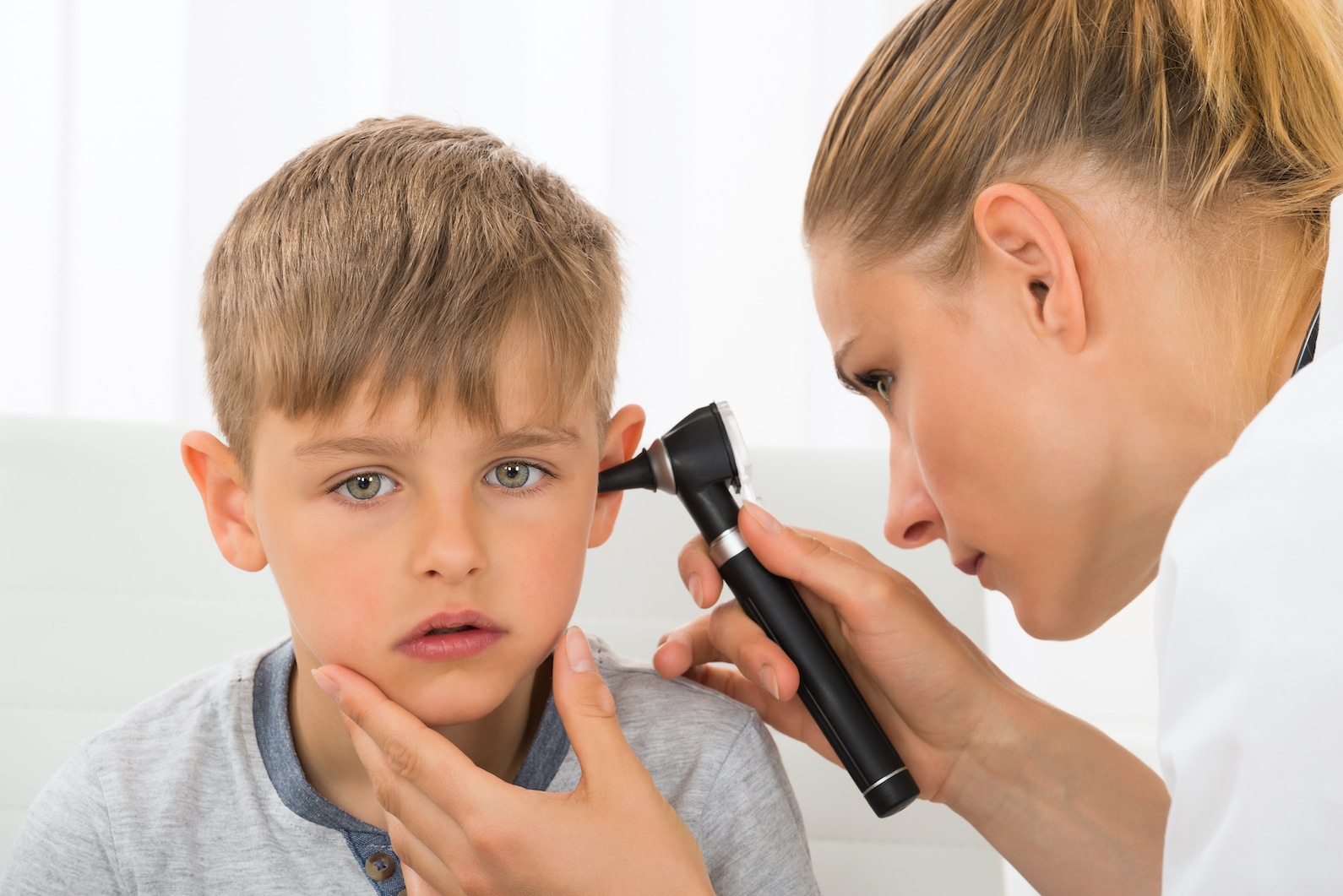One of the most common childhood ailments is an ear infection. Understanding what causes them can help you get the right treatment faster.
What Is an Ear Infection?
An ear infection occurs when fluid becomes trapped behind the eardrum because of an inflammation of the middle ear. If your child has an upper respiratory infection, the bacteria causing the infection can spread down to the middle ear. If the infection is caused by a virus, bacteria may be drawn to the infection and move to the middle ear to create a secondary infection.
There are three types of ear infections:
Acute Otitis Media (AOM)
AOM is the most common type of ear infection. When the middle ear becomes infected and swollen, fluid gets trapped behind the eardrum. This leads to an earache and oftentimes a fever in young children.
Otitis Media with Effusion (OME)
If the fluid remains trapped in the middle ear after an AOM has run its course, this is known as an OME. Most children experiencing this condition show no additional symptoms.
Chronic Otitis Media with Effusion (COME)
If your child has recurring ear infections or the fluid remains for an extended period of time, this is characterized as COME.
Why Children Are Susceptible?
While ear infections can affect patients of all ages, children are most likely to experience them. The Eustachian tubes, which are responsible for draining fluid from the ear, are smaller and more horizontal in children. If they become swollen, fluid is unable to drain from the ear.
A key part of a child’s immune system is the adenoids, which prevent bacteria from moving through the nose and mouth. Unfortunately, bacteria can become trapped in the adenoids and cause an infection. If the adenoids become enlarged, they can block the Eustachian tubes and prevent the ear from draining.
Five out of every six children will experience at least one ear infection by their third birthday.
Signs Your Child Has an Ear Infection
When ear infections affect young children, they may not be able to tell you that their ear hurts. Be on the lookout for the following signs in order to identify an ear infection early:
- Tugging or pulling on the ear
- Crying
- Trouble sleeping
- Fever
- Fluid draining from the ear
- Balance problem
- Trouble hearing
Treatment for Ear Infections
While ear infections used to always be treated with a course of antibiotics, more physicians are using the wait-and-see approach if your child is not experiencing severe ear pain or fever.
To learn more about ear infections or to schedule an appointment with an ear, nose and throat physician, contact the experts at Willamette Ear, Nose, Throat & Facial Plastic Surgery today.
Learn More About ENT Health
“Had a great experience. Got in very quick and felt safe with covid protocol! Everyone was extremely nice.”